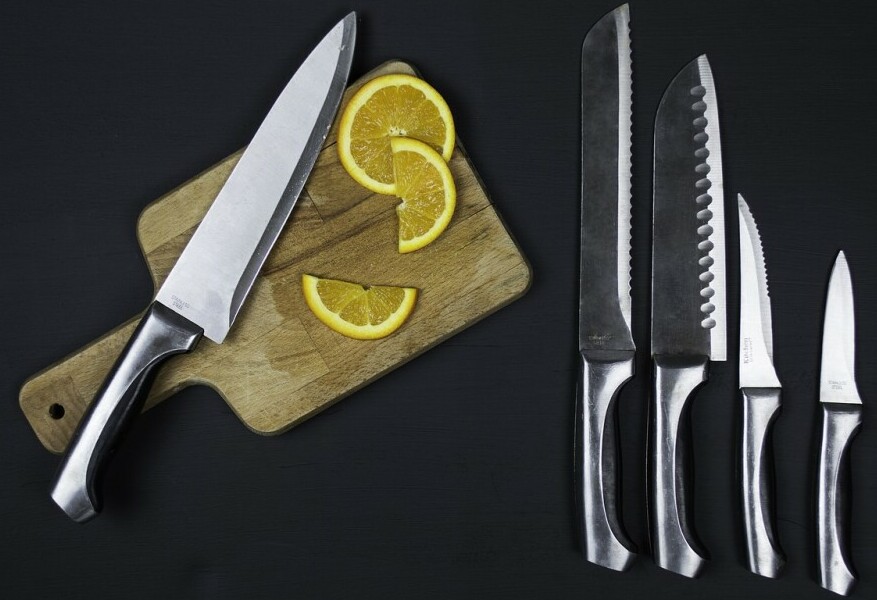 I’m going to start with a truth for anyone who spends time in the kitchen: A sharp knife is a chef’s best friend. Beyond just making the cut, it’s crucial for kitchen safety and efficiency. Think about it – a sharp blade requires less force, giving you more control and reducing the risk of accidents.
I’m going to start with a truth for anyone who spends time in the kitchen: A sharp knife is a chef’s best friend. Beyond just making the cut, it’s crucial for kitchen safety and efficiency. Think about it – a sharp blade requires less force, giving you more control and reducing the risk of accidents.
Now let’s talk bevels, the angles ground into the blade’s edge. Most knives have a bevel on both sides, meeting at a point; that’s your cutting edge. Finer angles can be razor-sharp but delicate, while wider angles trade ultimate sharpness for robustness. Different knives, different bevels, different uses.
So, how do you know when your blade needs a touch-up? It’s simple. It might start squashing tomatoes instead of slicing them or slipping on an onion rather than dicing smoothly. These are tell-tale signs it’s time to sharpen up.
So, why does sharpness matter so much? It all comes down to the quality of the cut. A sharp knife goes through food with precision, keeping the flavor intact, and it’s also a testament to your craftsmanship in the kitchen.
Heading into our next section, we’ll explore the assorted gear you can use to keep your knives in top form. You’re going to find out about the trusty whetstone, the convenient pull-through sharpener, and the ever-essential honing rod.
Selecting the Right Tools: A Guide to Knife Sharpeners
You can’t start the sharpening process without the proper tools, and the options available might surprise you.
The most common types are whetstones, also known as sharpening stones, pull-through sharpeners, and honing rods. Each has its unique advantages.
Whetstones are the go-to for most culinary enthusiasts and professional chefs. They offer superior control and can sharpen a variety of blades, but they do have a learning curve.
If you’re after convenience, pull-through sharpeners are quick and easy to use. However, they might not provide the same level of precision as a whetstone.
Honing rods don’t actually sharpen your knife; they straighten the edge. You’d use one of these between sharpening sessions to maintain a knife’s edge.
When you’re choosing a sharpener, think about the knives you’re using. Thicker, tougher blades may require a sturdy tool like a diamond-coated whetstone, while finer, delicate knives might benefit from a ceramic stone.
It’s also important to take care of your sharpeners. A dirty or worn sharpening stone can do more harm than good, so regular maintenance is key.
Remember, the goal is to keep your knife’s edge in top condition for as long as possible, so choose something that resonates with you and your needs.
Mastering the Technique: How to Sharpen Your Knife
I’m going to walk you through a step-by-step guide on how to sharpen your knife using a whetstone, as this method is widely regarded for its effectiveness and precision.
You’re going to find out about maintaining the proper angle, usually between 15 to 20 degrees. Consistency here is key, and there are angle guides available if you’re unsure.
Applying the correct amount of pressure is just as crucial. Too light, and you’ll be at it all day; too hard, and you could damage the blade. Aim for a firm, steady pressure.
I’ll cover safety precautions to keep in mind while sharpening your knives, such as keeping your fingers away from the blade’s edge and using a non-slip mat under your whetstone.
How often should you sharpen? That depends on use but giving your knife a run on the stone every few months is a good practice. If you’re a frequent user, consider honing with a rod weekly to maintain the edge.
Maintaining the Edge: Long-Term Knife Care Strategies
I want to make sure you’re set up for success, so let’s talk about how to keep those blades in cutting condition long after they’ve been sharpened.
First off, storing your knives properly is a big deal. Use a knife block, magnetic strip, or sheath to protect the edges. Throwing them in a drawer is a no-go. A dulling disaster waiting to happen.
You’ll often hear about honing and sharpening as if they’re the same thing, but there’s a difference. Honing straightens the edge of the knife, giving you a sharper cut without removing metal. Sharpen when the blade is truly dull and needs some metal removed to get back that edge.
Here’s a little inside tip – avoid those glass cutting boards or ones made of super hard materials. They can dull your knife faster than you think. Stick to wood or plastic.
I’m also going to let you in on another secret: don’t run your knives through the dishwasher. The heat and chemicals aren’t friends with your steel. Instead, wash them by hand and dry immediately.
Now, if your knives start looking a bit rough even after your own sharpening, consider getting in touch with a professional sharpening service. It can make a world of difference, especially for those high-quality knives that are a little more finicky.
In the end, remember that your first attempt at sharpening doesn’t need to be your last. You can always adjust your technique and improve. Keep practicing, and don’t focus too much on perfection. With these tips and a smidge of effort, you’ll be slicing, dicing, and julienning like a pro in no time.
I believe that purchasing a really good knife is worth the money. Most of the butcher block sets have poor blades.
I may earn a commission when you buy through this link or eligible for commission.
Happy cutting, slicing and dicing.
Kathie